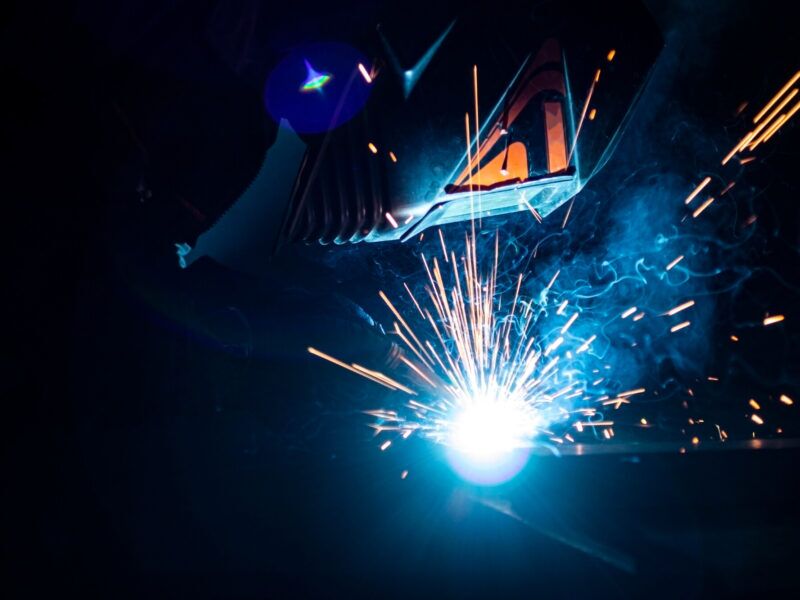How to Avoid Weld Undercut: Vital Tips for Welders
How to Avoid Weld Undercut: Vital Tips for Welders
Blog Article
A Comprehensive Overview to Identifying, Fighting, and Repairing Undercut Welding Issues in Your Welding Projects
In the realm of welding, experiencing undercut issues is a common obstacle that can endanger the architectural integrity and overall quality of your welding tasks. Comprehending the origin behind undercut welding, having the ability to precisely find it in your welds, and executing effective preventative actions are vital abilities for any welder. In addition, having the expertise and strategies to remedy undercut issues when they do occur can make a substantial difference in the last result of your welding endeavors. Keep tuned as we explore the essential parts of recognizing, preventing, and taking care of undercut welding issues, giving you with useful insights and strategies to boost your welding abilities to the following level.
Common Causes of Undercut Welding
Undercut welding, an usual issue in welding processes, can be triggered by numerous elements that need to be meticulously identified and dealt with to make sure the honesty of the weld joint. One of the primary root causes of undercut welding is extreme warmth input. When the welding parameters, such as voltage, current, or travel speed, are not appropriately established, an excessive amount of warm can be produced. This excess warm brings about the melting and succeeding elimination of the base product along the edges of the weld joint, producing a groove referred to as undercut.
One more typical cause of undercut welding is improper welding strategy. Determining these root creates and carrying out restorative procedures is necessary in avoiding and rectifying undercut welding troubles in welding projects.
Identifying Undercut in Welds

To determine undercut precisely, proper lighting and magnification tools are important to examine the weld joint completely. Utilizing tools such as a welding gauge or a magnifying glass can help in detecting even the tiniest undercut blemishes. In addition, running a finger or a finger nail along the weld joint can often expose undercut, as the surface may feel irregular or have a dip where the undercut exists.
Safety Nets for Undercut
Having a deep understanding of the root causes of undercut in welds enables for the application of effective safety nets to keep weld high quality and stability. One important preventive measure is correct weld joint prep work. Guaranteeing that the edges are tidy, devoid of impurities, and appropriately beveled can significantly decrease the possibility of undercut (Preventing weld undercut). Additionally, picking the proper welding parameters, such as voltage, existing, and travel rate, is crucial. These settings must be maximized to stop extreme warmth input, which can cause undercut development.

Methods for Dealing With Undercut

Raising the welding present or lowering the travel rate can help fill up in the undercut. In addition, altering the welding strategy from a press to a drag or vice versa can likewise aid minimize undercut.
One more strategy is to use a weaving movement while welding to make certain proper sidewall more information combination and fill in the undercut. By oscillating the welding arc back and forth within the weld joint, the welder can deposit much more filler product right into the undercut areas, successfully eliminating the flaw.
Additionally, grinding out the undercut and rewelding the joint can be a sensible service for a lot more extreme undercut issues - Preventing weld undercut. This process includes getting rid of the undercut section, preparing the base metal, and afterwards rewelding the joint with correct welding criteria and strategies to avoid undercut from repeating

Professional Tips for Preventing Undercut
Using correct welding techniques and preserving control over key welding parameters are crucial techniques for welders intending to prevent undercut in their weld joints. Additionally, choosing the ideal welding process and filler metal for the certain application can aid prevent undercut. Maintaining a constant traveling rate throughout the welding procedure is another vital idea to protect against undercut.
Conclusion
In final thought, determining, protecting against, and fixing undercut welding issues in your welding jobs is vital for making certain strong and durable welds. Preventing weld undercut. By comprehending the typical root causes of undercut, being able to determine it in welds, executing safety nets, and using appropriate methods for taking care of undercut, you can prevent prospective problems and create premium welds. Complying with expert tips for avoiding undercut can aid you boost your welding abilities and create much better cause your tasks
Undercut welding, an usual problem in welding processes, can be caused by numerous variables that require to be very carefully recognized and dealt with to guarantee the integrity of the weld joint. Additionally, running a finger or a finger nail along the weld joint can often expose undercut, as the surface might feel uneven or have a dip where the undercut exists.
Making use of appropriate welding methods and maintaining control over vital welding specifications are essential techniques for welders intending to stop undercut in their weld joints.In final thought, identifying, protecting against, and taking care of undercut welding problems in your welding tasks is important for ensuring durable and solid welds. By understanding the usual causes of undercut, being able to recognize it in welds, executing preventative steps, and making click for more info use of appropriate strategies for repairing undercut, you can stay clear of prospective concerns and create high-grade welds.
Report this page